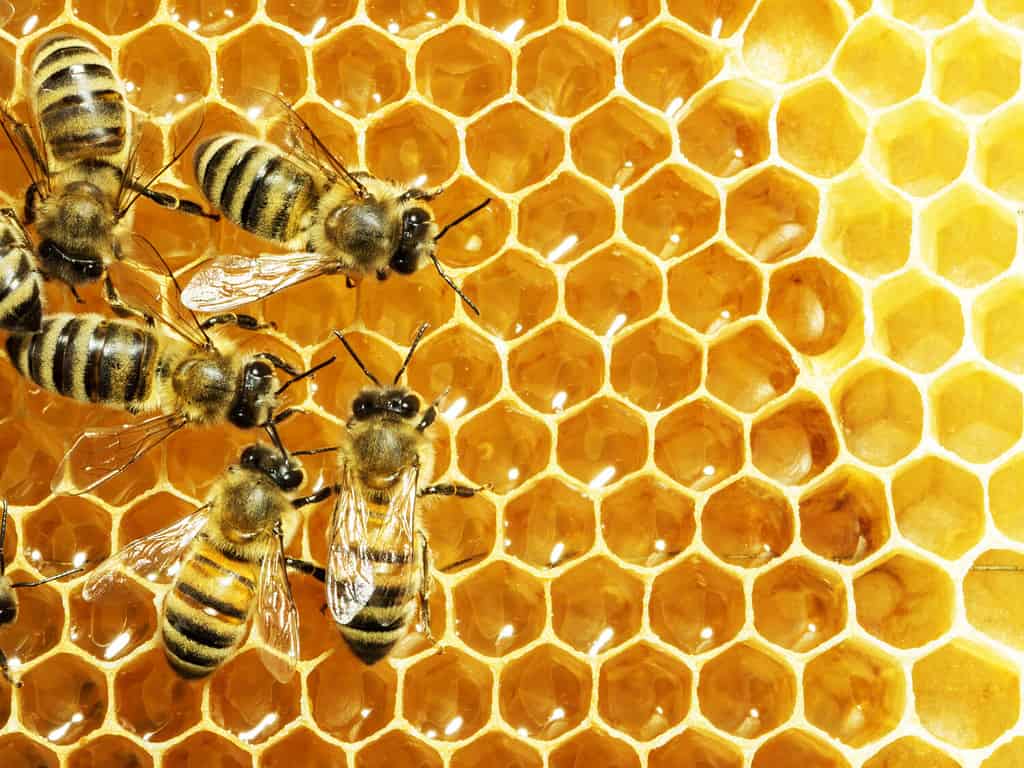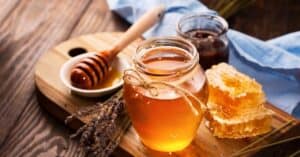Honey has been connected with human civilizations for thousands of years. Fossils of honey bees were discovered 150 million years ago, but no one is exactly sure when humans discovered them as a resource. We know that Stone Age paintings from 8,000 years ago depict honey being used to treat disease, but human use of honey could easily predate these. The ancient Egyptians used it as a sweetener and as a gift to the gods. The ancient Greeks viewed it as both food and medicine, and the Romans used it extensively in their cooking. But what is honey, and why do bees make it? Let’s take a closer look at what we know about this remarkable natural substance.
Do All Bees Make Honey?
There are over 20,000 different types of bees, and 4,000 of these live in the US. Some are solitary, and some are communal. Most of them live off pollen and nectar, but some eat carrion, and the sweat bee actually drinks human sweat!
Of all these species, only eight produce honey, although there are many more subspecies. These include the western honey bee and the Himalayan giant honey bee. Most of these have been cultured or exploited by humans at some point. The two truly domesticated bees are the western honey bee (Apis mellifera) and the eastern honey bee (Apis cerana). The western honey bee was domesticated by the ancient Egyptians and possibly even before that.
Wild honey bees often build combs in high trees or cliffs. They can be very fierce and are capable of stinging a human to death when they try to raid their honey.
Why Do Bees Make Honey?

Worker bees pack the honey in the comb and flap their wings to remove more moisture.
©StudioSmart/Shutterstock.com
Bees make honey as a preservation method in the same way as we make jams and pickles. It is a way of taking the abundance of nutrition available during the summer and making it available in the winter months. Honey-producing bees feed on pollen (a source of fats) and nectar, which is the sweet substance produced by flowering plants. The problem is that most plants flower in the summer. In the winter, there are no flowers, which means no nectar, and that leaves the bees with a problem.
It is only the bumble bee queen that survives the winter for this very reason. Honeybees, however, have a stash of delicious honey to keep them alive through the winter.
How Do Bees Make Honey?
The process of making honey involves dehydration (removing water) and breaking down sugars. The worker bees collect nectar by sucking it from flowers using their long, thin mouth tubes called proboscis. The honey is stored in their special stomach called a crop. Here, the complex sugars are broken down by enzymes into simpler sugars that are less prone to crystallizing.
Back at the hive, the workers regurgitate the partially digested nectar and pass it back and for into each other’s mouths. Then, it is packed by the younger workers into hexagonal cells made of beeswax. This is the honeycomb. Even more, water is removed by evaporation as the bees fan their wings across the honeycomb. This whole process reduces the water content from around 80 percent to around 18 percent. The nectar is now honey and is sealed into the comb using a cap of fresh beeswax. Job done!
What Is Honey Made Of?

There are hundreds of types of honey.
©Lizavetta/Shutterstock.com
There are more than 300 types of honey made from the same number of different pollens and nectars. There’s a lot more in honey than you may have realized. Between 95 percent and 97 percent of its dry weight is made up of carbohydrates, and the sugars called glucose and fructose are the main components, but there are many more. It also contains important amino acids (protein), including proline. There are also enzymes and 31 minerals, including phosphorus, sodium, and calcium. It also contains loads of trace components, including silicon, lithium, and strontium. More than 600 volatile compounds, including aldehydes, ketones, and alcohols, have been found in honey in small quantities. Its antioxidant effect probably comes from flavonoids and polyphenols. There are plenty of other bioactive compounds, including galangin and quercetin.
What Other Products Do Bees Make?
As well as honey, bees also make beeswax. This is excreted by some worker bees to construct the walls and caps of the honeycomb. It is used for candles, waterproofing, cosmetics, and, furniture polish. Royal jelly is secreted by bees to nourish the larvae. It is marketed as a health supplement but there are very few studies showing that it is effective.
Incredible Honey Facts
- Honey does not spoil if stored at room temperature in a dry place. Even after a year, it may be cloudy but is still safe to eat.
- Cloudy honey can be made clear again by microwaving it.
- Honey is acidic with a pH of between 3.2 and 4.5 it contains acetic, formic, and citric acids.
- There are very few vitamins in honey and those it does contain are in very small amounts.
- Sadly, honey also suffers from environmental pollution. It can contain lead, cadmium, and arsenic!
- Not all honey is made from nectar. Some bees collect honeydew (a sugary substance) excreted by sap-sucking insects to tide them over until the flowers bloom.
The photo featured at the top of this post is © Tibilletti/Shutterstock.com
Thank you for reading! Have some feedback for us? Contact the AZ Animals editorial team.





